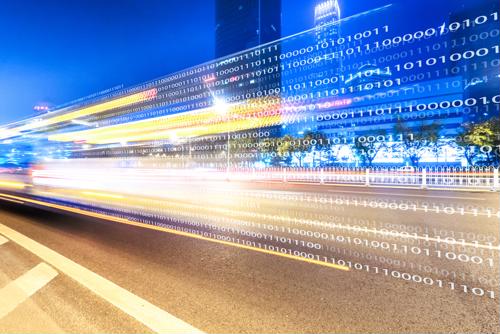
IoT for Smart Cities is Engineering Our Future
By PerleSeptember 28, 2018
The smart cities of the future are being built right now, and they depend on IoT and 5G networks to enable public and civilian safety, energy efficiency, and economically and environmentally sound concepts. The potential of 5G driven IoT devices to help integrate and deploy IoT-enabled devices and increase connectivity and communication cannot be denied. 5G networks are uniquely suited to fulfill the needs of IoT-connected devices as they start to play a larger role in daily life. Government agencies need to support smart phones, laptops and tablets, at a bare minimum, but an established high speed network can enable sensors, appliances, light bulbs, climate control devices, digital displays, and wearables.
Smart cities can now leverage 5G public networks to manage and maintain utility readers, parking meters, street lights, and fire hydrants. Machine-to-machine communications can be handled for up to a million devices per square kilometer, leveraging low latency, low cost 5G, and create massive energy savings across neighborhoods by minimizing battery use and power draws while improving efficiency and scheduling shifts to account for traffic, season, weather, amount of light, and temperature, to name only a few parameters.
5G networks can drive new application and service capabilities across various agencies, while enhancing pre-existing services. 5G network speeds will handle data-intensive applications ranging from high resolution video to on the edge content like augmented and virtual reality (AR and VR), enabling seamless unified communications and file transfers on demand. Conference calls can be conducted without jitter or delay, and documents shared or presentations delivered with clarity.
Network World notes that AR is creating new opportunities for architects, engineers, and site managers. Flat, two-dimensional blueprints displayed on computer screens will give way to precision, 3-D projected models delivered by portable devices that can be updated across networks and accounts in seconds. VR and AR potential when leveraging 5G networks and IoT enabled devices can change the face of field work, from utilities management to new construction to road work to crash site investigations. Insurance claims in disaster zones and healthcare issues relating to public safety can all be addressed with lightning speed on networks robust enough to manage massive amounts of data in split seconds.

Public and industrial safety can also be improved, with remote applications and processes enhanced by the ability of 5G to vastly reduce network latency rates. High-risk professions such as construction, advanced manufacturing and law enforcement will benefit from lower latencies that enable responsive interfaces. This opens up the potential for automated, drone or robot performed, or remote work that can minimize the risk of bodily harm to employees and bystanders. Complete jobs in hazardous or difficult-to-access locations becomes a matter of course, and safety is significantly increased across all industry verticals.
While IoT will depend heavily on 5G, and increasing bandwidth demands are driving investments into fiber optic cabling, Increasing bandwidth demands are driving investments into fiber optic cabling. Governments also need to protect investment in existing copper Ethernet-based hardware. Copper to Fiber Media Converters make it possible to future proof the network with additional bandwidth capacity, extend links over greater distances using fiber optic cable and protecting data from noise and interference. governments also need to protect investment in existing copper Ethernet-based hardware. Contact Perle to discover how our products can bridge the gap between present and future.



